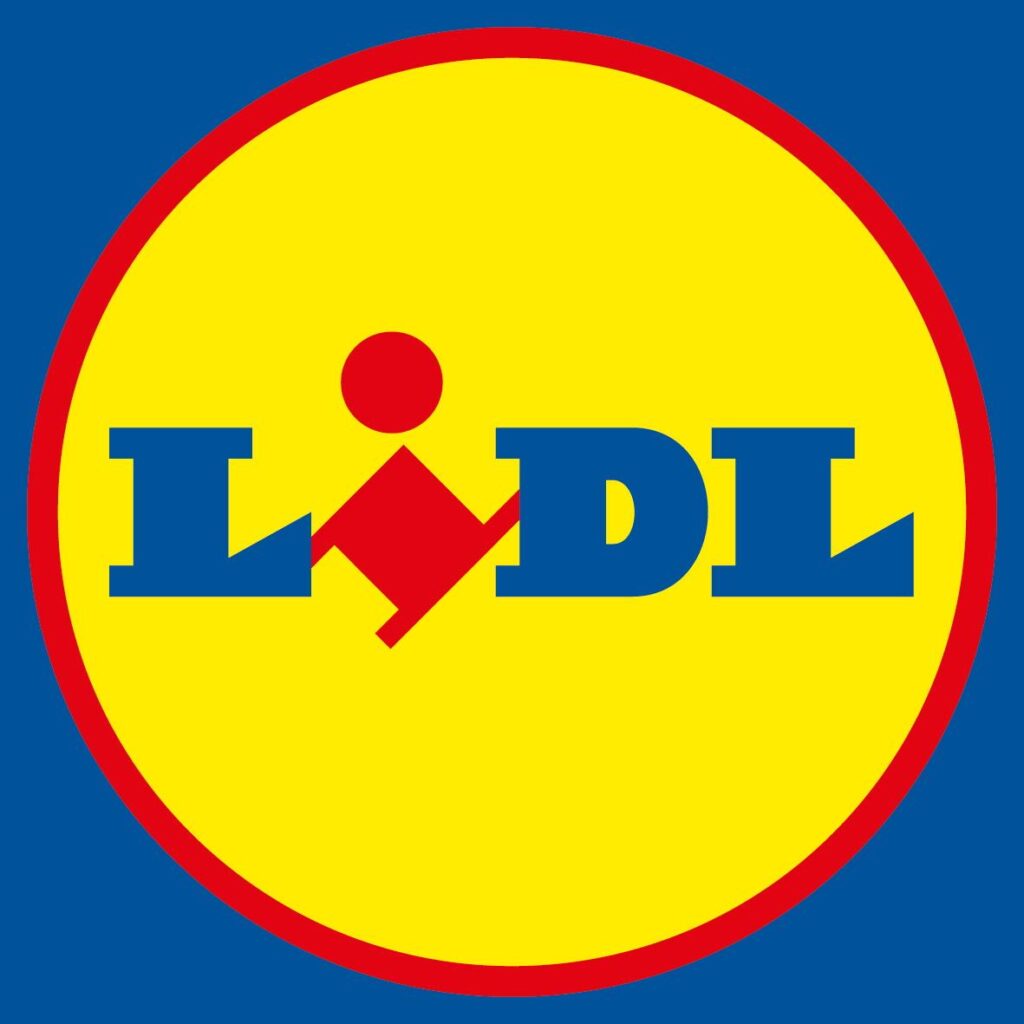
No Words, but Still Making a Mark – Lidl Defends Its Figurative Logo
Can a figurative mark be “genuinely used” if it’s only ever used together with a word element?

Trademark use can be tricky — especially when the mark in question is never used on its own. This was precisely the situation in three recent cases before the EUIPO involving British supermarket chain Tesco and its German competitor Lidl (C 48 720, C 48 730, C 48 746). At the heart of the dispute were three nearly identical figurative trademarks registered by Lidl. These marks consisted of abstract, colorful shapes, recognizable as the background of the well-known Lidl logo — but crucially, without the word element ‘LIDL’.
Tesco argued that the trademarks had not been used in their registered form and should therefore be revoked. Lidl responded that the figurative element had been continuously and extensively used in combination with the word ‘LIDL’, and that such use was sufficient to preserve the rights in the figurative mark.
The EUIPO sided mostly with Lidl. The key issue was whether the use of a figurative mark as part of a composite sign could qualify as genuine use of the figurative mark itself. The answer, grounded in the CJEU’s Colloseum judgment, is yes — if the figurative element remains independently distinctive. This article explores the background, the legal reasoning and the implications for trademark strategy.
Facts of the case
Lidl had registered several figurative EU trademarks consisting solely of the colored geometric background used in its logo: a yellow circle framed by a red and blue border.

In practice, however, Lidl almost always uses this design in combination with the word ‘LIDL’.

Tesco challenged the validity of the registrations, filing three revocation actions on the grounds of non-use. The argument was simple: the registered figurative marks were never used as such—only as part of a combined word/figurative mark. Therefore, they should be revoked for lack of genuine use under Article 58(1)(a) EUTMR.
In its defense, Lidl leaned heavily on the precedent set by the Court of Justice of the European Union in its 2013 judgment in Colloseum Holding GmbH (C‑12/12). The court held that use of a composite mark may suffice to establish genuine use of one of its components—provided that the component retains its independent distinctive character.
Lidl argued that its colorful background was not merely decorative, but had itself become a recognizable brand element. The visual design—colors, shapes and layout—was consistent and distinctive enough to serve as an indication of origin, even when combined with the word ‘LIDL’.
Decision of the Office
In all three decisions, the EUIPO took a differentiated approach. Lidl’s rights in its figurative marks were maintained in part and revoked in part, depending on the specific goods and services and the evidence provided.
The key takeaway: the use of the figurative mark in combination with the word ‘LIDL’ was found to be a valid use under Article 18(1)(a) EUTMR. Citing the Colloseum judgment, the EUIPO confirmed that the figurative element remained visible, distinctive and capable of indicating origin — even when embedded in the composite sign.
At the same time, Lidl failed to provide sufficient evidence of use for certain classes of goods and services unrelated to retail, such as financial services or ticketing platforms. In those areas, the rights were revoked.
Key takeaway
The Lidl/Tesco cases highlight important strategic lessons for trademark owners who rely on word/figurative combinations:
– Use in a modified form may count as genuine use — but only if the essential elements of the registered mark remain intact and independently distinctive.
– The Colloseum precedent is helpful, but no guarantee: each case depends on the specific design and market perception.
– Clear documentation is critical. Use should be proven with dated evidence (e.g., packaging, advertising, online presence) and linked to specific goods and services.
Conclusion: Silent Marks Can Still Speak
The EUIPO’s rulings offer an important reminder: even a logo without words can serve as a trademark—if it is designed and used with care. Lidl succeeded in showing that its visual brand elements had taken on a life of their own and functioned as a source identifier.
For trademark owners, the cases underline the need to think long-term: a figurative mark must be more than a decorative backdrop. It must stand out, be remembered, and be documented in use.
No words? No problem — at least when your logo speaks for itself.
Decisions of the Cancellation Division of EUIPO C 48 720, C 48 730, C 48 746
Please feel free to contact us if you have any questions.
Or read our related articles on this topic “Trademark? BANANA! When Figurative Marks Aren’t Enough” and “Trademark Strategy: Lessons from Chiquita, Lidl and Walmart” here in our LBP Blog.

Dietrich Blumenröhr
Patent Attorney